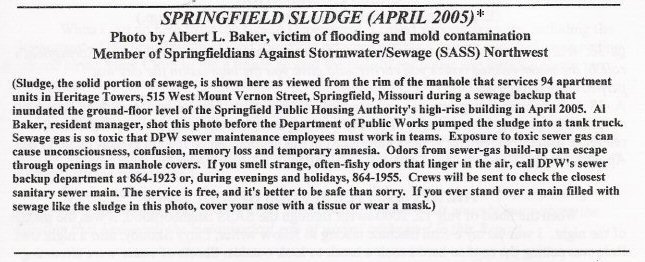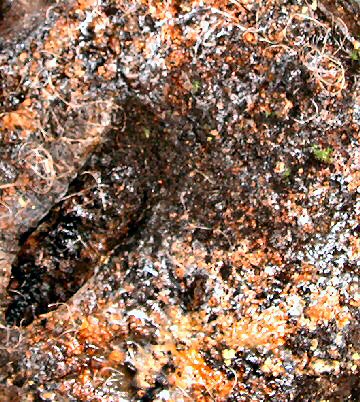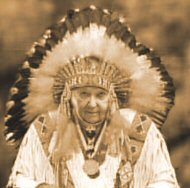|
|
 Copyright 2009 by Wanda Sue Parrott & Albert L. Baker |
You have read the hype: What a great place to retire. Retiree, beware! |
 Sure, housing is cheap;
Sure, housing is cheap;one of the best spots to live. Don't you wonder why? |

 If full truth were told,
If full truth were told,Springfield rightly could be named: FLOODVILLE, U.S.A. |
 |
|
Once that Deed is yours, you could wind up stuck like me-- going down the drain. |
 Ask before you buy:
Ask before you buy:Is this property flood-prone? Sellers might not tell. |

 Learn the difference
Learn the differencebetween Sinkholes and Stinkholes: FECAL COLIFORM! |
  bacteria from sewage thrives in colonies. |
 Seek and you will find
Seek and you will findsinkholes every twelve inches in Greene County soil. |

 Nature's drainage holes,
Nature's drainage holes,pebble-sized or like cow ponds, lead to caves and streams. |


 When sinkholes fill up
When sinkholes fill upfrom rain fall and water flows, topsoil becomes pools. |
(Because Webmaster Albert L. Baker's original photo [above] of sewer sludge resembled "Abstract No. 18" painted in 1950 by American artist Jackson Pollock, Al tried computer-generated experimentation that transformed his digital slice of real-life art into this abstract he entitled "Planet in Peril.")  |

 Parking lots and streets
Parking lots and streetsact as viaducts in rain, surrogate storm drains. |


 Where storm waters swirl,
Where storm waters swirl,merging with raw effluent, sewage spills occur. |
 |
|
Stagnant marshes form. Sometimes hours or days or weeks pass before ground dries. |
 Houses start to smell.
Houses start to smell.Floorboards weaken, bend and crack. Settling's taking place. |

 On hot humid nights,
On hot humid nights,grounds muddied by raw sewage smell like steam-cooked shit. |
 |
|
Topsoil can cave in, causing streets and yards to drop with no warning signs. |
 If you're still enthralled
If you're still enthralledby hype that boasts of cheap housing, PLEASE HEED THIS ADVICE: |
 |
|
BOLT ALL WINDOWS TIGHT. Gnats that breed in swill-filled soil swarm through wire mesh screens. |
 INSTALL METAL FLOORS.
INSTALL METAL FLOORS.Mold invading from below creeps and crawls through boards. |

 BE A MILLIONAIRE.
BE A MILLIONAIRE.What you get for buying cheap could cost you your life. |


 RENT HERE FOR THREE YEARS.
RENT HERE FOR THREE YEARS.If you've still found paradise, BUY AT YOUR OWN RISK! |



 Wanda Sue Parrott (aka Prairie Flower) 


 Springfield, Missouri |
|
Although various schools of haiku exist, the form Wanda Sue Parrott prefers features three untitled lines with a total of 17 syllables. Lines 1 and 3 have five syllables; line 2 has seven syllables. Ideally, line 1 introduces a theme; line 2 illustrates or dramatizes it; line 3 resolves it. Ms. Parrott taught this haiku/senryu format at Ozarks Technical Community College (OTC) during the 1990s. She says, “In pure haiku, nature prevails. In senryu, the topic is nature affected by humans, or just human nature.” The scroll is a “green” sequence poem because it exposes environmental hazards that can and often do exist in urban areas similar to the one that inspired these 17-syllable stanzas. It is also a “red” poem. That is, the “Cherokee Red” cast on Wanda Sue Parrott's left hand was designed by Michael P. Nachtigal, M.D., St. John's Sports Medicine physician, after she broke it while trying to move during the frigid days of winter so the city could take possession of The Place of Weeping Waters. She says: “I vacated my mold-infested house on 12/31/08 and moved into a clean, dry apartment while waiting for the city to complete the deal, which finally occurred on 2/2/09. My house was on land along an alternate route of the Trail of Tears, where starving travelers on the last leg of their journey to Oklahoma in 1839 replenished their water and supplemented their meager rations of moldy meal with fresh fish from a pond that white men later tried to drain and make into a building site. I have some Chickasaw blood, and write sometimes under the pen name Prairie Flower, but dubbed my cast 'Cherokee Red' to complement the title I gave myself below. You may interpret it literally, literarily or both. |
|
Wanda Sue Parrott
“The Last Indian on the Trail of Tears” |
  (Left) Wanda Sue Parrott, 33,
in ceremonial photo as Honorary
Chief of the White Buffalo Tribe
while she was a reporter with the
Los Angeles Herald-Examiner,1968.
(Left) Wanda Sue Parrott, 33,
in ceremonial photo as Honorary
Chief of the White Buffalo Tribe
while she was a reporter with the
Los Angeles Herald-Examiner,1968.(Right) Wanda Sue Parrott, 73, in symbolic regalia honoring all Native Americans who formerly occupied The Place of Weeping Waters, now known as City of Springfield, Greene County, Missouri, 2008. * Originally published in "FUNGUS AMUNGUS", a report prepared for Springfieldians Against Stormwater/Sewage (SASS), neighborhood association, 2006. THIRD WEEPING WATERS AWARDS |